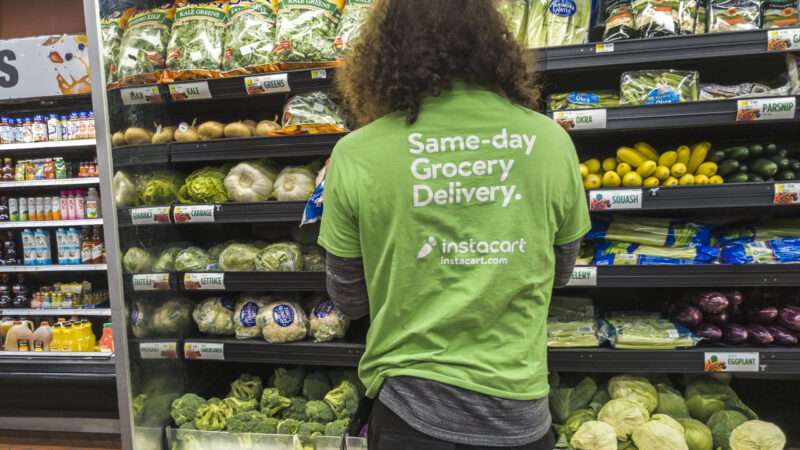
In 2023, New York City became the first city in America to pass a minimum wage rate for app-based restaurant delivery drivers. Several other progressive cities have followed suit, resulting in a range of issues from rising delivery costs to many drivers dropping out of the workforce entirely. Now, the city that started it all is doubling down—this time on grocery delivery drivers.
In July, the New York City Council passed numerous bills that it claimed were designed to protect grocery delivery drivers. This legislative package introduced new rules, requiring delivery apps to include a 10-percent tipping option either before or at the time of the order (vs. afterwards, where the option exists now), and mandated that app-based platforms pay delivery drivers within seven days of the end of a pay period.
One of the most notable bills would extend New York City’s minimum wage mandate from restaurant delivery drivers to drivers delivering groceries. The rate, first set at $19.96 per hour in 2023, has risen to $21.44 per hour. Though current Mayor Eric Adams eagerly endorsed the original law (saying at the time, “Our delivery workers have consistently delivered for us—now, we are delivering for them”), he surprisingly vetoed the new expansion. “Now is not the time to do anything that will further increase the cost for New Yorkers of obtaining groceries, when prices are already too high,” Adams said in his veto statement.
Despite mayoral resistance, the City Council has decided to plow forward anyway by overriding Adams’ veto.
New York’s experiment with delivery driver wage mandates hasn’t gone well. Pay went up after the 2023 rule kicked in, but so did prices—and many drivers left the market altogether. The city saw an 8 percent drop in its delivery workforce, while food delivery costs rose 10 percent, including a 12 percent jump in restaurant prices and a staggering 58 percent spike in app fees. Tips, meanwhile, plunged 47 percent. Platforms even started capping drivers—at one point, Uber Eats reported more than 27,000 New Yorkers were on their driver waitlist.
Seattle followed suit in 2024 with a $26-an-hour minimum wage for delivery drivers—and immediately watched the system collapse. Apps tacked on a new $5 delivery fee, and with taxes added, customers were soon paying bills with nearly 30 percent of the cost unrelated to the food itself. DoorDash saw 33,000 fewer orders in just the first two weeks, wiping out about $1 million in restaurant sales.
Counter to the law’s intention, many Seattle delivery drivers saw their earnings slashed by over half. “Demand was dead,” according to one such driver. A recent report from gig companies found that, following the ordinance taking effect, delivery orders dropped 25 percent, and driver pay fell 28 percent per hour logged on.
Even Seattle’s City Council president, who initially backed the mandate, later proposed cutting the topline rate to $19.97, in line with the state’s minimum wage. The partial repeal failed to pass.
The track record for minimum wages for app-based delivery workers isn’t good—even Adams sees that now. But the New York City Council has decided to march grimly forward, setting the stage for higher grocery prices for all New Yorkers.
The post New York Doubles Down on Delivery Wage Disaster appeared first on Reason.com.



